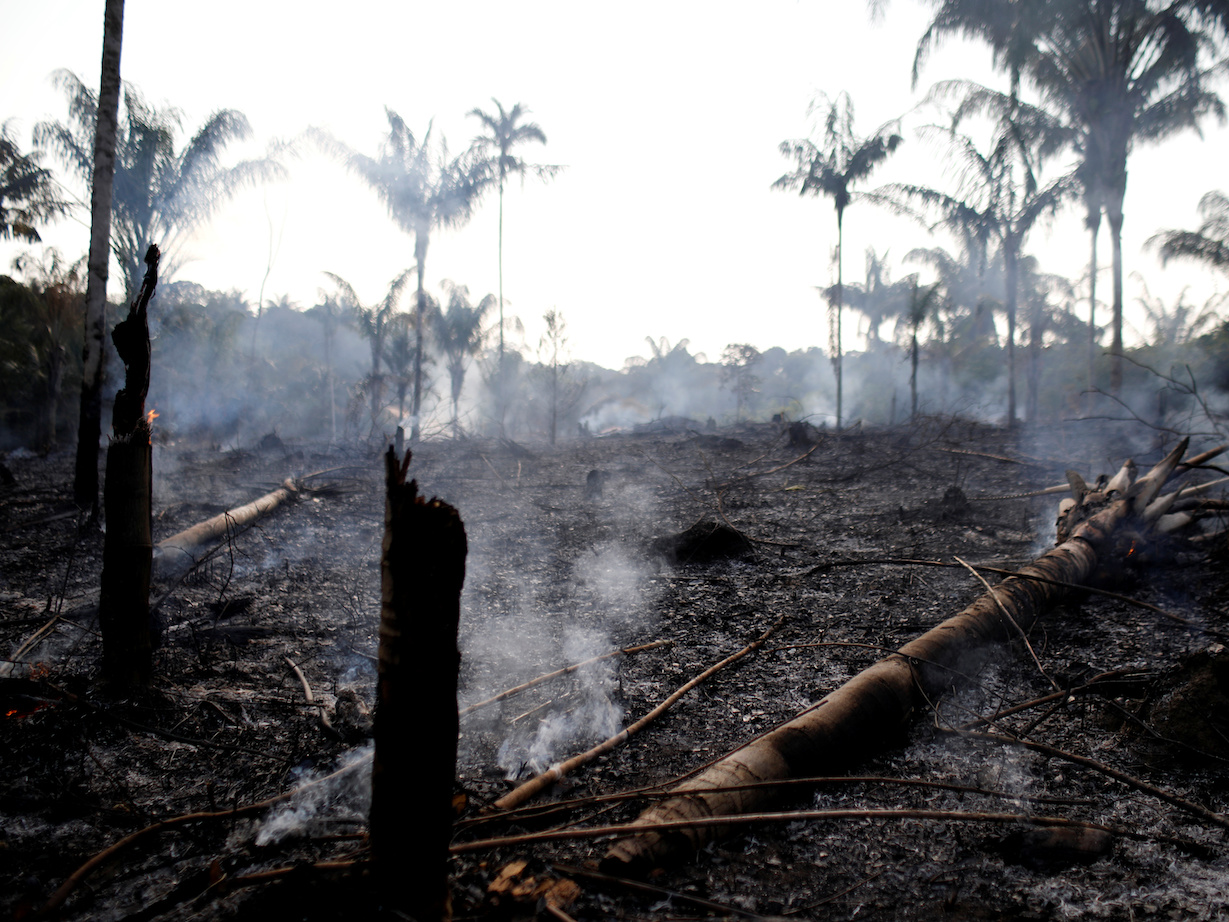- The Amazon rainforest is burning at an unprecedented rate: More than 74,000 fires have sparked so far this year, compared to 40,000 total fires in 2018.
- The Amazon has also seen record-breaking levels of deforestation. About three football fields’ worth of rainforest per minute are being lost, primarily to infrastructure projects, logging, mining, and farming – much of which is not legal.
- Scientists warn that if the forest loss passes a certain threshold, the Amazon may never recover and could become a savanna.
- In this scenario, called “dieback,” the death of rainforest trees and vegetation could release billions of tons of stored carbon into the atmosphere, warming the planet even further.
- Visit Business Insider’s homepage for more stories.
As thousands of fiery infernos rage across the Amazon rainforest, tropical vegetation, trees, and the fauna they house are being razed. Since August 15, more than 9,500 new forest fires have started across Brazil, primarily in the Amazon basin.
This year so far, scientists have recorded more than 74,000 fires in Brazil. That’s nearly double 2018’s total of about 40,000 fires. The surge marks an 83% increase in wildfires over the same period of 2018, Brazil’s National Institute for Space Research reported. The largest state in Brazil, Amazonas, declared a state of emergency on Monday.
Already, 2019 has the highest number of fires observed in a single year since researchers began keeping track in 2013 – and there are still four months to go.
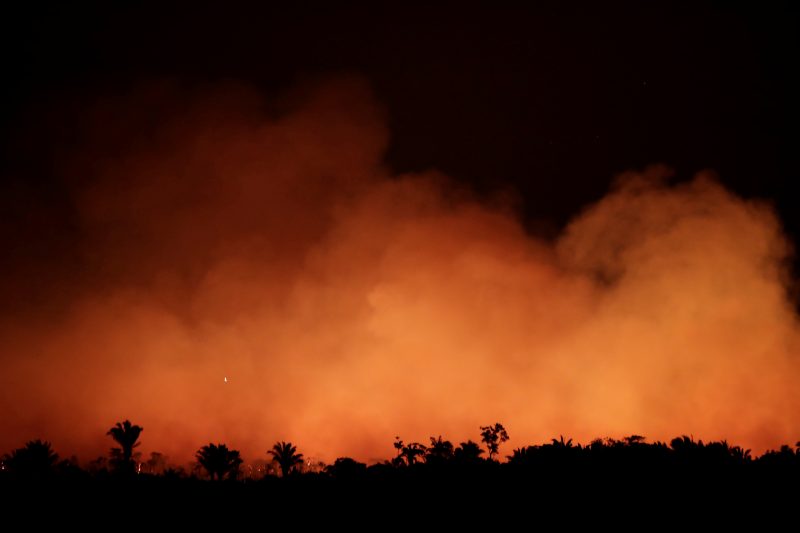
In addition to the destruction from these blazes, the Amazon was hit by record-breaking levels of deforestation last month, primarily due to infrastructure projects, logging, mining, and farming - much of which is not legal.
These fires, coupled with deforestation losses, could destroy so many trees that they trigger a doomsday scenario for the world's largest rainforest. Called a "dieback," the process would turn the Amazon into an African-savanna-type landscape.
In a dieback scenario, the tropical trees - and the fauna they support - would disappear, releasing up to 140 billion tons of stored carbon into the atmosphere and causing an uptick in already rising global temperatures.
About three football fields' worth of Amazonian trees are falling every minute
In the month of July, the Amazon lost 519 square miles (1,345 square kilometers) of rainforest. That's an area more than twice the size of Tokyo.
That set a new record for the most deforestation in the Amazon in a single month, The Guardian reported. The total deforested area in July was up 39% from the same month last year.
Data from Brazilian satellites indicated that about three football fields' worth of Amazonian trees are falling every minute.
The deforestation is directly linked to the fires in the Amazon, since farmers sometimes set the forest ablaze to make room for livestock pastures and crop fields. These purposeful burns can then get out of control.
As the world's largest rainforest, the Amazon plays a crucial role in keeping our planet's carbon-dioxide levels in check. Plants and trees take in carbon dioxide and release oxygen back into the air in their process of photosynthesis. This is why the Amazon, which covers 2.1 million square miles, is often referred to as the "lungs of the planet." It's also the reason that the Amazon's health is so important in the face of climate change.
What's more, at least 400 indigenous tribes live in the rainforest, and their cultures and livelihoods are intimately linked with the state of the Amazon.
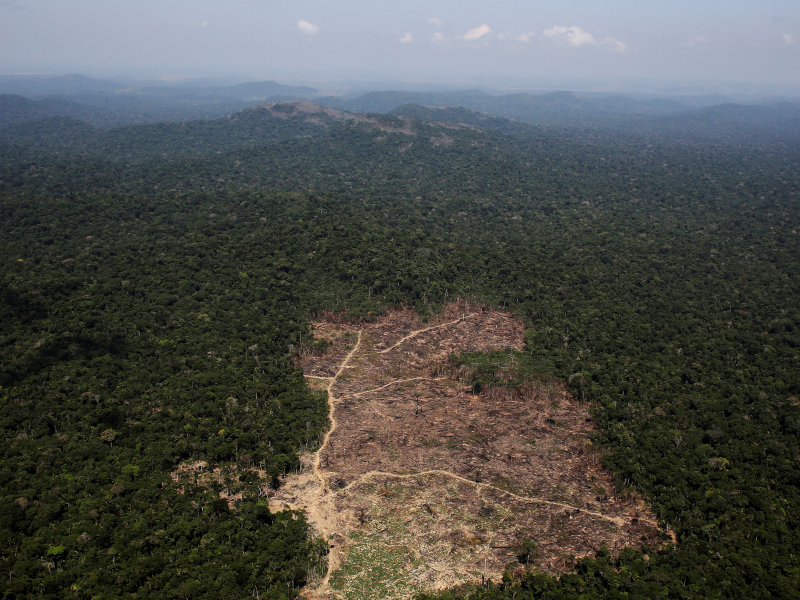
In the past 50 years, roughly 20% of the Amazon - about 300,000 square miles - has been cut down in Brazil, according to the Intercept.
If another 20% of the Amazon were to disappear, that could trigger a feedback loop known as a dieback, in which the forest dries out and burns. Once this dieback starts, the forest would be "beyond the reach of any subsequent human intervention or regret," according to the Intercept. That would cause the Amazon to devolve into a savanna-like landscape.
This tipping point would not only lead to the end of the Amazon as we know it; the process would also cause up to 140 billion tons of stored carbon to get released into the atmosphere, causing an uptick in global temperatures.
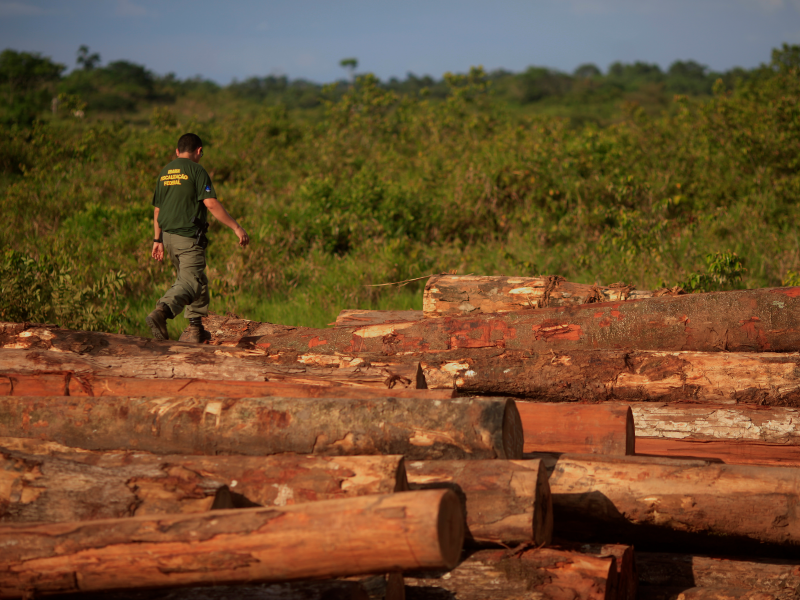
'Bolsonaro is the worst thing that could happen for the environment'
Brazil controls a lion's share of the Amazon. However, its president, Jair Bolsonaro, has indicated that protecting the rainforest is not one of his top priorities - Bolsonaro believes that an excess of protected land has hampered Brazil's economic development, and he supports development projects like a highway and hydroelectric dam in the Amazon.
During his campaign, Bolsonaro promised to dilute existing environmental protections on Amazonian land and to open up indigenous reserves to industry. In February, his administration announced an umbrella project called Barão do Rio Branco, which includes the construction of a hydroelectric dam, a bridge over the Amazon River, and an extension to an existing highway through 300 miles of rainforest.
Read More: Brazil's president has started taking steps towards damaging the 'lungs of the planet'
Bolsonaro's administration is also working to loosen protections on natural land reserves. One of his first policy changes was to transfer the power to certify indigenous lands as protected from Brazil's FUNAI (the National Indian Foundation) to its Ministry of Agriculture. The change has since been reversed, however, due to protests and pushback from native communities.
But in March, Bolsonaro's administration started opening swaths of indigenous lands to mining projects. The Brazilian president plans to remove environmental protections from a chunk of forested land south of Rio de Janeiro as well, in order to create "a Cancún of Brazil," The Guardian reported.
What's more, between January and May of this year, the Brazilian government lowered the number of fines it levied for illegal deforestation and mining (down 34% from the same period in 2018) and decreased its monitoring of illegal activity in the rainforest. Seizures of illegally harvested timber have also dropped: Under the previous administration, 883,000 cubic feet of illegal timber was seized in 2018, but as of May 15, Bolsonaro's government agencies had only seized 1,410 cubic feet, Pacific Standard reported.
"There is no point sugar-coating it. Bolsonaro is the worst thing that could happen for the environment," Paulo Artaxo, a climate-change researcher at the University of Sao Paulo in Brazil, told Science prior to Bolsonaro's election.
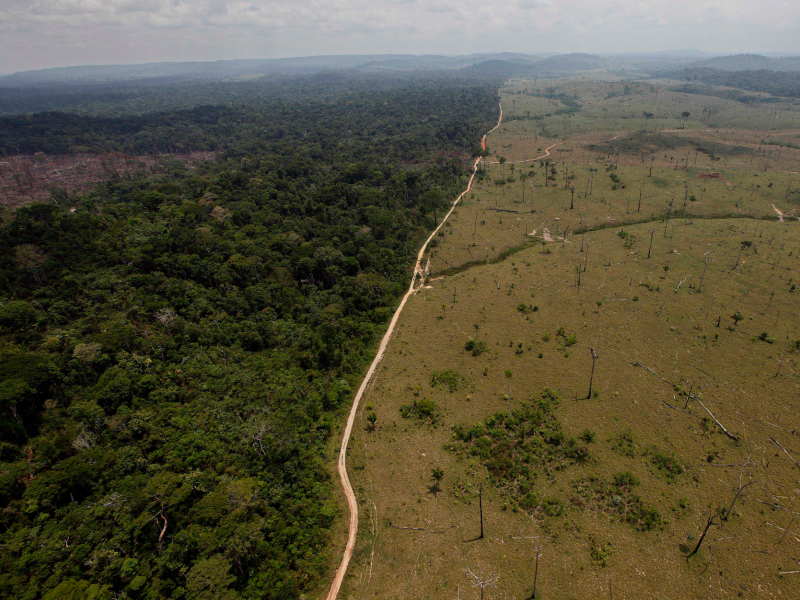
Bolsonaro has claimed that the data about the country's deforestation is "a lie," Reuters reported. And he suggested without any evidence that non-governmental organizations deliberately started the blazes in the Amazon to punish him for cutting their funding.
"On the question of burning in the Amazon, which in my opinion may have been initiated by NGOs because they lost money, what is the intention? To bring problems to Brazil," he said on Wednesday, when speaking to a steel conference.
Bolsonaro also told Reuters that "with all the devastation you accuse us of doing and having done in the past, the Amazon would be extinguished already."
But Marcelino Da Silva, a member of Brazil's indigenous Apurinã tribe, told the Intercept that he is indeed seeing giant chunks of the Amazon vanish.
"We know what happens when the state does nothing," Da Silva said. "We know how quickly the forest can disappear."

